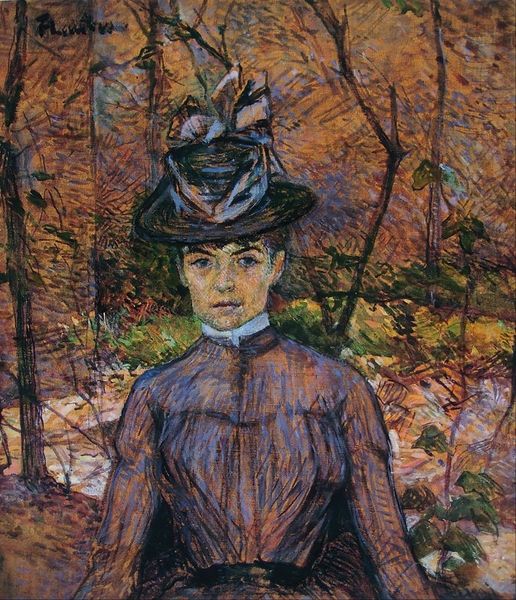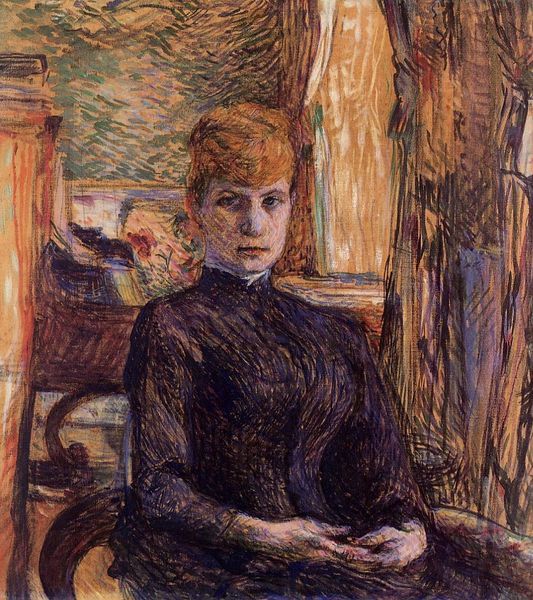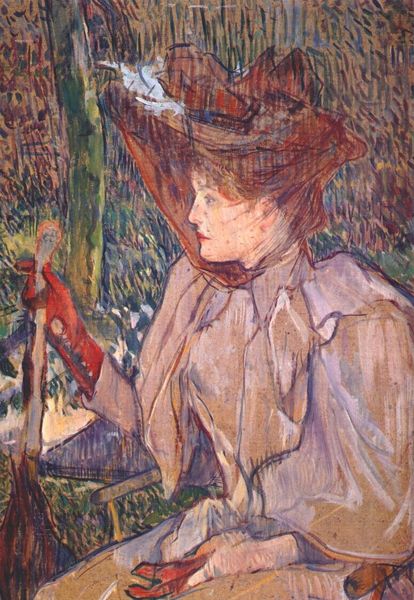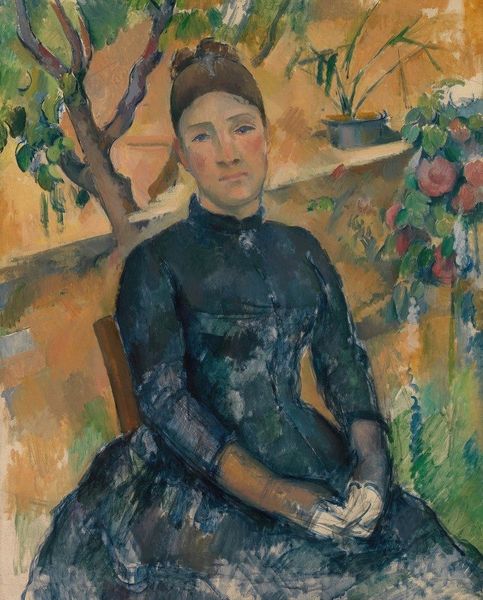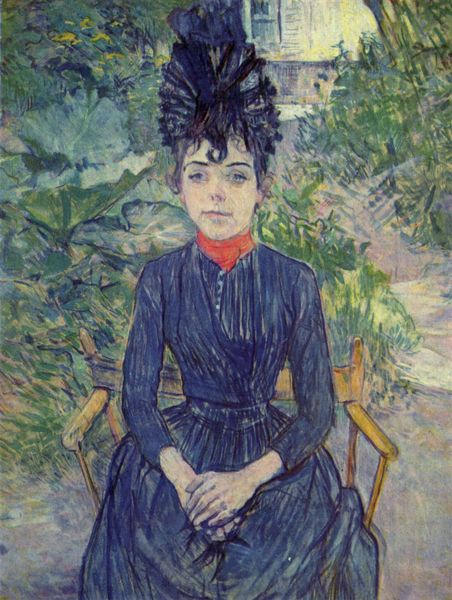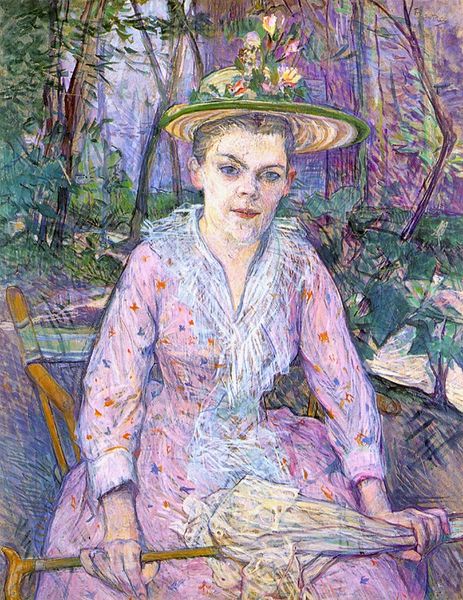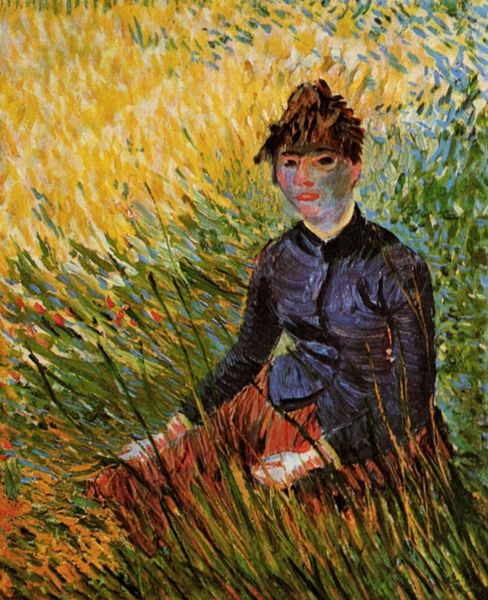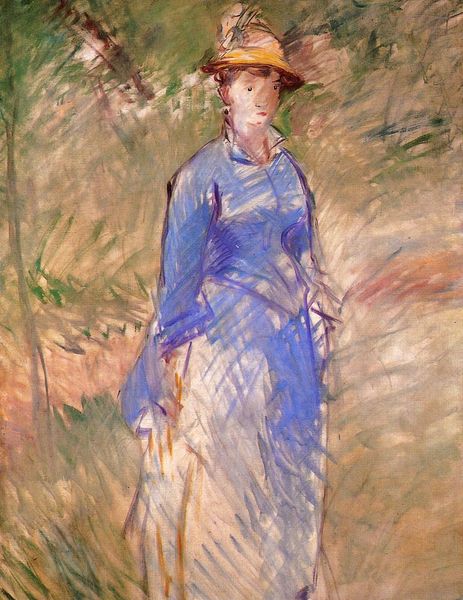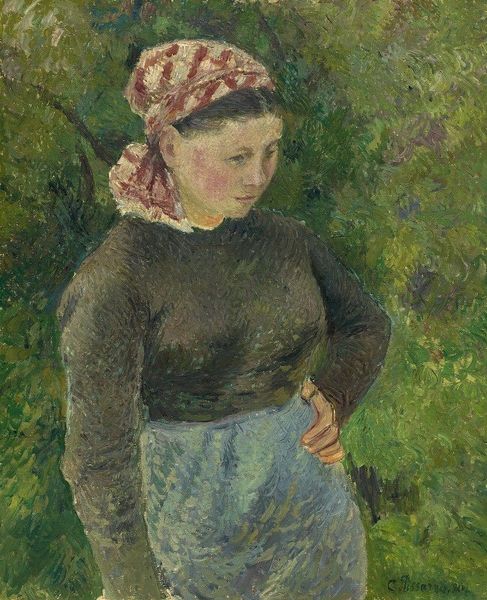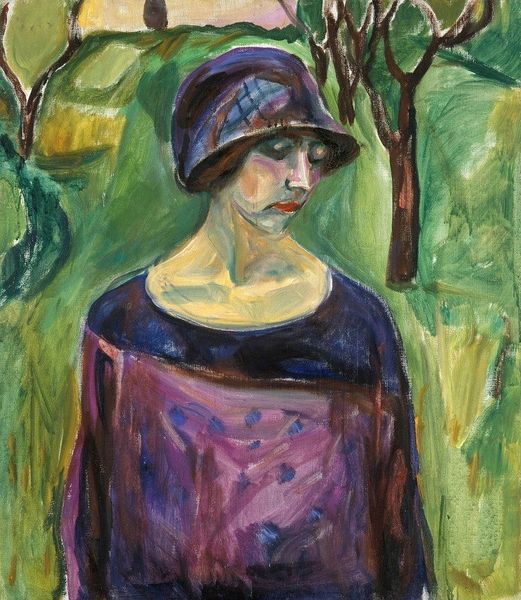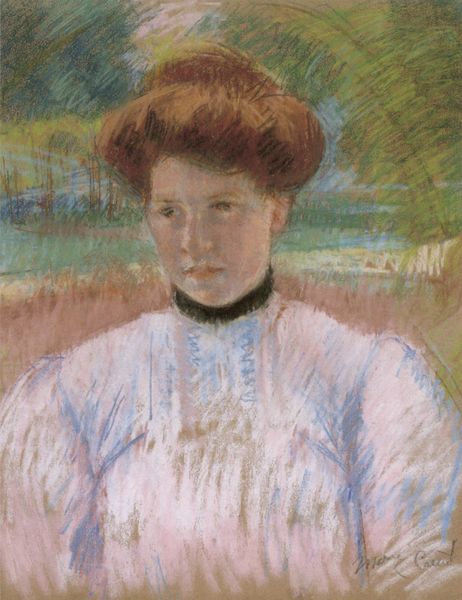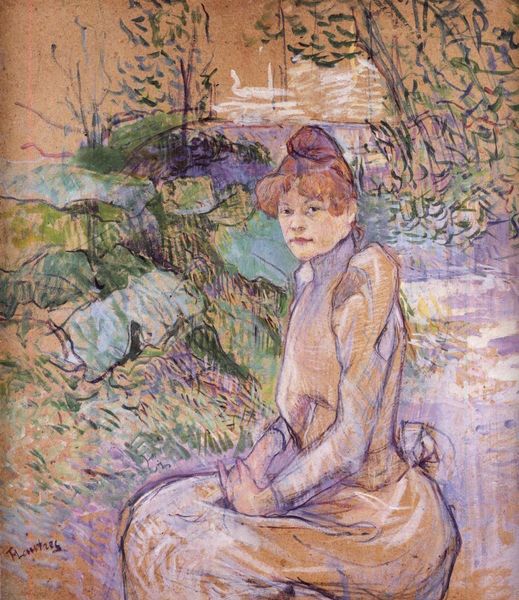
oil-paint
#
portrait
#
figurative
#
impressionism
#
oil-paint
#
figuration
#
oil painting
#
history-painting
#
post-impressionism
#
portrait art
Copyright: Public Domain: Artvee
Curator: Take a moment to observe the brushstrokes and subtle coloring in "The Streetwalker," an oil painting from around 1890-1891 by Henri de Toulouse-Lautrec. What strikes you most immediately about it? Editor: The figure's gaze feels remarkably direct and challenging, and also there is a palpable weariness about her, or at least that is the mood I instantly connect with. It also seems she has her defense mechanisms up, the hairstyle is bold and unapologetic and she seems not necessarily hostile, but at the very least ready for anything. Curator: It's interesting to consider that tension, given the broader social context of the painting. Lautrec was deeply involved in depicting the lives of those on the margins of Parisian society, often in the cabarets and brothels of Montmartre. His representation of women in these settings certainly ignited much debate concerning gender, class, and societal expectations. Editor: Right, we need to look closely at those power dynamics. Was Lautrec simply observing or was he also complicit in exploiting those very realities? The unflinching portrayal of this woman forces us to confront the societal structures that both defined and confined her existence. Did his position as an elite shape the artistic outcome of the subject in the artwork? Curator: Exactly. It also reflects a tension in the public perception of women at that time. Women pushed the boundaries of gender roles in fin-de-siècle Paris. Examining it through a lens that centers intersectionality of class, gender, and sexuality helps unlock deeper understanding of this complicated moment and artwork. The directness, as you noticed, is also intriguing when placed within broader feminist thought on the male gaze. Editor: Placing Lautrec's painting within the larger institutional history of art also invites us to consider the evolving role of art as social commentary, how the societal attitudes inform that commentary, and whose perspectives ultimately gain visibility within museum walls. Ultimately we have a historical responsibility when displaying such potentially harmful historical depictions to offer nuance and historical context to make it educational. Curator: I concur completely. When considering its enduring relevance in contemporary dialogues about identity and representation, "The Streetwalker" is undoubtedly still an artwork with potency for exploration of visual media, power, and more, if explored with an awareness of the dangers inherent in looking. Editor: It's important for museums to critically examine what narratives are perpetuated through displaying works such as this, to think through it on a deeper ethical level, especially when looking through a contemporary point of view, where, ideally, we do better by marginalized peoples than we used to.
Comments
No comments
Be the first to comment and join the conversation on the ultimate creative platform.
